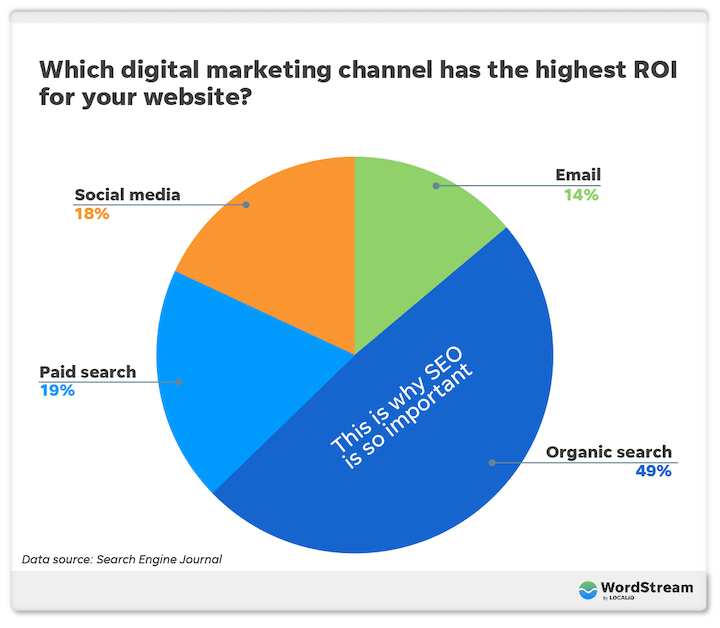In 2024, the digital landscape for churches continues to evolve, making it vital for your church to stay updated with the latest church website trends. Creating an engaging online presence through your own church website is more crucial than ever.
From sleek mobile optimization to vibrant visual storytelling, your church must embrace the ever-changing realm of church website design trends to connect with your communities effectively. In this fast-paced digital era, where interactions often begin online, churches must ensure that their online platforms reflect their values, mission, and welcoming spirit.
Whether it’s integrating interactive elements for real-time engagement or prioritizing accessibility features for inclusivity, understanding these trends is essential.
Let’s explore the must-know church website trends that will elevate your online presence and foster deeper connections within your congregation and beyond.
Estimated reading time: 11 minutes
Table of contents
11 Church Website Trends for 2024

Here is our list of the 11 top church website trends in the year 2024. These trends have only emerged recently, utilizing new technologies and concepts for effective online reach and sustainability. If you want your church website to reach more people than ever, these ideas are for you.
Let’s dive in.
1. Mobile Optimization
First on our list is mobile optimization, which has become more and more relevant in recent years. Essentially, you want to make sure that your website works on both computers and mobile devices. mobile As more people turn to their smartphones for information and connection, ensuring that your church website is optimized for mobile devices is paramount.
Great church websites prioritize seamless browsing experiences across smartphones and tablets, catering to the diverse needs of their audience. With mobile optimization, visitors can easily access essential information, watch sermons, and engage with community events regardless of their device.
From responsive design to intuitive navigation, embracing mobile optimization enhances accessibility and fosters deeper connections with congregants on the go. In 2024, as mobile usage continues to surge, integrating mobile-friendly features remains a foundational element for creating impactful church websites.
2. Interactive Elements

Secondly, we have a recent addition to websites: interactive elements. Interactive elements can play a pivotal role in engaging congregations and fostering community connections. From forms for prayer requests to live chat support, these features significantly enhance user experience and promote active participation.
One key interactive element often found on great church websites is the integration of event calendars for sharing upcoming events and activities. By providing easy access to event details and registration options, churches can effectively communicate their schedules and encourage attendance.
Additionally, interactive elements create opportunities for real-time engagement and feedback. This enables members to interact with church leadership and fellow members. As churches strive to create dynamic online platforms, incorporating interactive elements remains essential for enhancing communication, fostering community engagement, and nurturing spiritual growth in 2024.
3. Modern Design/Aesthetic
When we’re looking at the best church websites, modern design and aesthetic play a crucial role in attracting and engaging visitors. Take, for instance, the Elevation Church website, known for its sleek and contemporary design. Or the Village Church website, which has a really nice look. A modern design not only reflects the church brand but also creates a welcoming and visually appealing online environment for congregants and newcomers alike.
From clean layouts to vibrant visuals, modern design elements elevate the overall user experience and convey the church’s message effectively. Incorporating intuitive navigation and strategic use of whitespace enhances readability and guides visitors through the website seamlessly.
In 2024, prioritizing modern design and aesthetic principles remains essential for creating impactful online experiences and strengthening the church’s online presence.
4. Accessibility Features
In website development, accessibility features ensure that all site visitors, including new visitors, can engage with content seamlessly. Here are essential accessibility features for inclusive church websites:
- Alt text for images: Descriptive text for images enables screen readers to convey visual content to users with visual impairments.
- Keyboard navigation options: Navigable by keyboard ensures ease of access for users who cannot use a mouse.
- Adjustable font sizes: Allows users to customize text size for better readability, accommodating varying visual abilities.
- Transcripts for audio content: Provides text versions of audio content, benefiting users with hearing impairments.
- Captions for videos: Subtitles for video content enable users with hearing impairments to follow along with the dialogue.
When you focus on accessibility features, it reflects a commitment to inclusivity and enhances the overall user experience for all visitors.
5. Personalized User Experience

Offering a personalized user experience on a current church’s website is key to engaging visitors effectively. Tailoring content and features to match the interests and preferences of individual users fosters a deeper connection and enhances their overall experience.
By analyzing user behavior and preferences, your church’s website can present relevant content, such as upcoming events, sermons, and community initiatives, to each visitor. Implementing features like personalized recommendations and user-specific messaging creates a sense of belonging and encourages further interaction with the website.
As churches strive to cultivate meaningful online communities, prioritizing personalized user experiences remains essential. Additionally, it builds relationships, fosters engagement, and nurtures spiritual growth through digital platforms.
6. Social Media Integration
Integrating social media into a current church’s website is crucial ti engage visitors and build community connections. By embedding social media feeds and sharing buttons, churches can extend their online reach and encourage interaction with their content.
Sharing sermons, event updates, and inspirational messages across platforms like Facebook, Instagram, and Twitter amplifies the church’s message and facilitates meaningful engagement with congregants and newcomers alike.
Additionally, implementing clear call-to-action buttons linking to social media profiles encourages visitors to connect and follow the church’s updates.
Effective integration into church websites is paramount as social media continues to play a central role in communication and community building. It facilitates outreach efforts and strengthens relationships with members both online and offline.
7. Security and Privacy
Ensuring security and privacy on a current church’s website is paramount for protecting sensitive information and fostering trust among visitors. Here are essential measures for safeguarding church websites:
- SSL encryption: Secure Socket Layer encryption ensures data transmitted between the user’s browser and the website remains encrypted and protected from potential breaches.
- Regular software updates: Keeping website software up-to-date prevents vulnerabilities and patches known security loopholes.
- Strong password policies: Implementing robust password requirements for website access helps mitigate the risk of unauthorized access.
- Privacy policy disclosure: Transparently outlining how user data is collected, stored, and used builds trust with visitors and demonstrates commitment to privacy.
- User authentication measures: Implementing multi-factor authentication adds an extra layer of security, requiring additional verification steps for accessing sensitive information.
In 2024, prioritizing security and privacy measures underscores the church’s commitment to safeguarding visitor information and maintaining a trusted online presence.
8. Easy Online Giving

Facilitating easy online giving on your church’s website is crucial for supporting its mission and ministries. Offering a streamlined donation process ensures that members can contribute conveniently and securely, empowering them to support the church’s initiatives effectively.
By integrating multiple payment gateways, such as credit/debit cards and online wallets, churches provide flexibility and accommodate various giving preferences. Implementing a user-friendly interface simplifies the donation experience, guiding donors through the process effortlessly and minimizing friction points.
Clear and transparent communication about how donations are used inspires trust and encourages generosity among congregants.
As technology continues to reshape the landscape of giving, prioritizing easy online giving on multisite church websites fosters financial stewardship and strengthens the collective impact of the church’s ministries and outreach efforts.
9. SEO Optimization
Search Engine Optimization (SEO) optimization is vital for ensuring that websites are easily discoverable and rank well on search engine results pages. By incorporating relevant keywords and phrases throughout website content, churches can improve their visibility and attract more visitors.
According to WordStream, organic search is considered to be the highest ROI channel by 49% of marketers. That is all SEO, so you can see why that is super important.

Creating high-quality, engaging content that addresses the needs and interests of the target audience enhances the website’s authority and credibility in the eyes of search engines. Optimizing meta tags, titles, and descriptions improves the likelihood of the website being clicked on by users searching for relevant information.
Additionally, optimizing images and multimedia elements with descriptive alt text further enhances accessibility and search engine visibility. Regularly monitoring and analyzing SEO performance metrics enables churches to identify areas for improvement and refine their strategies accordingly.
Want to hear a fun fact? This podcast was written using SEO optimization, and that’s probably why you found it. Prioritizing SEO optimization is essential for churches seeking to expand their online reach and effectively communicate their message to a broader audience.
10. AI Integration

Integrating Artificial Intelligence (AI) into websites enhances user experience and streamlines various functions. AI-powered chatbots, for instance, provide instant responses to visitor inquiries, improving customer service and engagement. These chatbots can handle common queries, guide users through website navigation, and even assist with scheduling appointments or accessing information.
In addition, AI-driven recommendation engines analyze user behavior and preferences to offer personalized content and suggestions, enhancing the overall browsing experience. Another aspect of AI integration is voice-recognition technology. This enables hands-free interaction with websites, catering to users who prefer voice commands over traditional typing.
By harnessing the capabilities of AI, your website can anticipate user needs, streamline processes, and provide tailored experiences that resonate with visitors.
As AI technology continues to advance, integrating AI into websites remains a powerful tool for churches seeking to enhance user engagement and deliver seamless online interactions.
11. Improvement and Adaptation
Adapting and improving websites is crucial for keeping them relevant and effective in meeting user needs. Here are key strategies for ongoing enhancement:
- Regular updates: Keeping content fresh and relevant ensures visitors find valuable information.
- User feedback: Actively seeking and implementing user feedback helps address concerns and improve user experience.
- Analytics monitoring: Analyzing website metrics provides insights into user behavior and areas for improvement.
- Mobile optimization: Adapting websites for mobile devices ensures accessibility and usability across different platforms.
- Emerging trends: Staying abreast of new technologies and design trends helps keep websites modern and engaging.
- Testing and optimization: Conducting A/B testing and usability tests identifies areas for improvement and optimization.
- Content strategy refinement: Regularly evaluating and refining content strategy ensures it aligns with user needs and organizational goals.
In 2024, prioritizing improvement and adaptation ensures websites remain effective tools for engaging users and achieving organizational objectives.
Church Website Design Trends

Embracing each church website design trend on this list is essential for your church to maintain relevance and effectively engage with your communities online. By implementing mobile optimization, interactive elements, and personalized user experiences, your church can create welcoming digital spaces that foster connections and support spiritual growth.
Prioritizing accessibility, security, and easy online giving further enhances the overall user experience and strengthens trust with congregants. Continuously adapting and refining websites to reflect emerging trends and user preferences ensures that your church remain at the forefront of digital engagement in 2024 and beyond.
By staying responsive to the evolving needs of your members and leveraging innovative technologies, your church can create impactful online platforms that support your mission and ministry.
Embracing church website design trends is not just about staying current—it’s about building vibrant online communities that extend the reach and impact of your church’s message and ministry. We hope this was helpful. God bless!
More Resources on Church Websites





